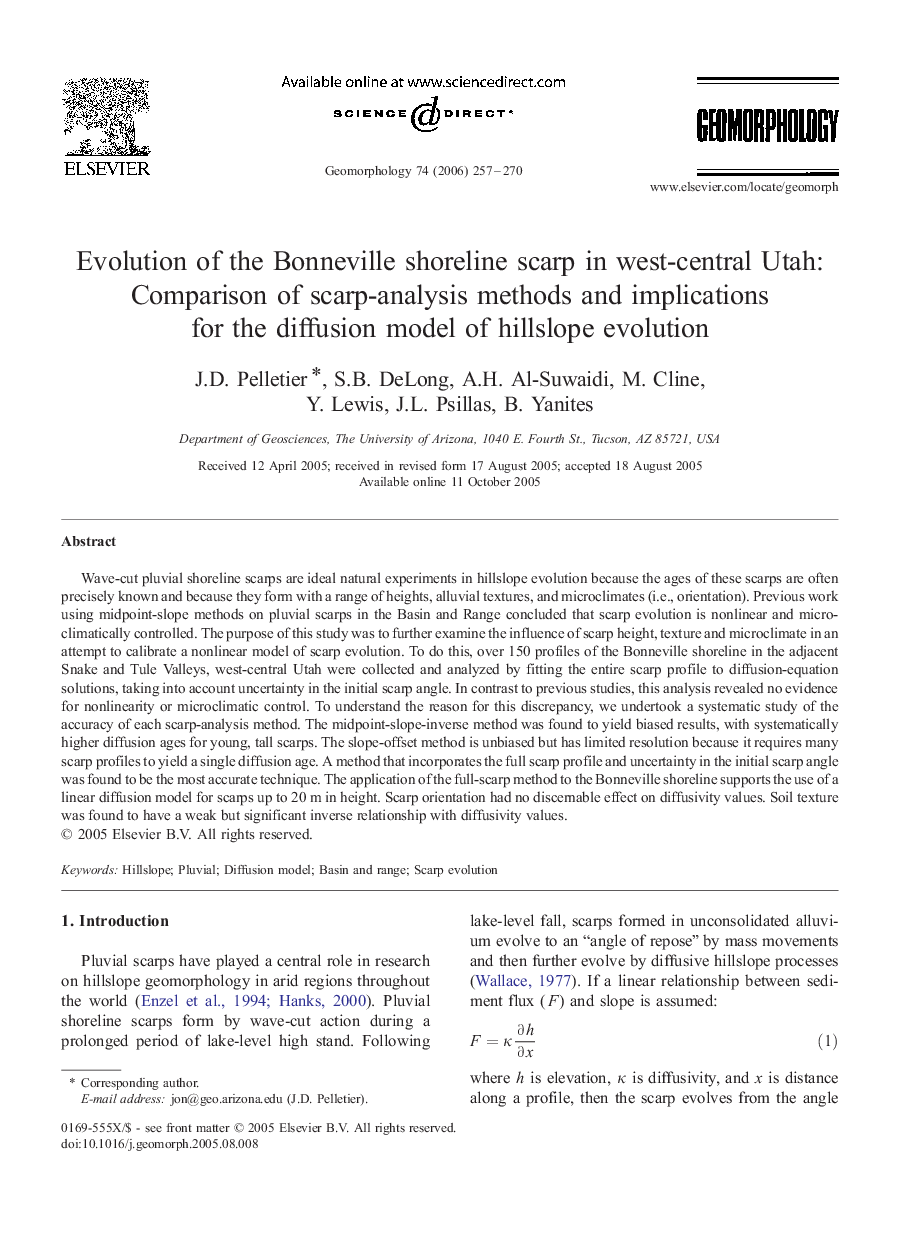| Article ID | Journal | Published Year | Pages | File Type |
|---|---|---|---|---|
| 4687647 | Geomorphology | 2006 | 14 Pages |
Wave-cut pluvial shoreline scarps are ideal natural experiments in hillslope evolution because the ages of these scarps are often precisely known and because they form with a range of heights, alluvial textures, and microclimates (i.e., orientation). Previous work using midpoint-slope methods on pluvial scarps in the Basin and Range concluded that scarp evolution is nonlinear and microclimatically controlled. The purpose of this study was to further examine the influence of scarp height, texture and microclimate in an attempt to calibrate a nonlinear model of scarp evolution. To do this, over 150 profiles of the Bonneville shoreline in the adjacent Snake and Tule Valleys, west-central Utah were collected and analyzed by fitting the entire scarp profile to diffusion-equation solutions, taking into account uncertainty in the initial scarp angle. In contrast to previous studies, this analysis revealed no evidence for nonlinearity or microclimatic control. To understand the reason for this discrepancy, we undertook a systematic study of the accuracy of each scarp-analysis method. The midpoint-slope-inverse method was found to yield biased results, with systematically higher diffusion ages for young, tall scarps. The slope-offset method is unbiased but has limited resolution because it requires many scarp profiles to yield a single diffusion age. A method that incorporates the full scarp profile and uncertainty in the initial scarp angle was found to be the most accurate technique. The application of the full-scarp method to the Bonneville shoreline supports the use of a linear diffusion model for scarps up to 20 m in height. Scarp orientation had no discernable effect on diffusivity values. Soil texture was found to have a weak but significant inverse relationship with diffusivity values.
